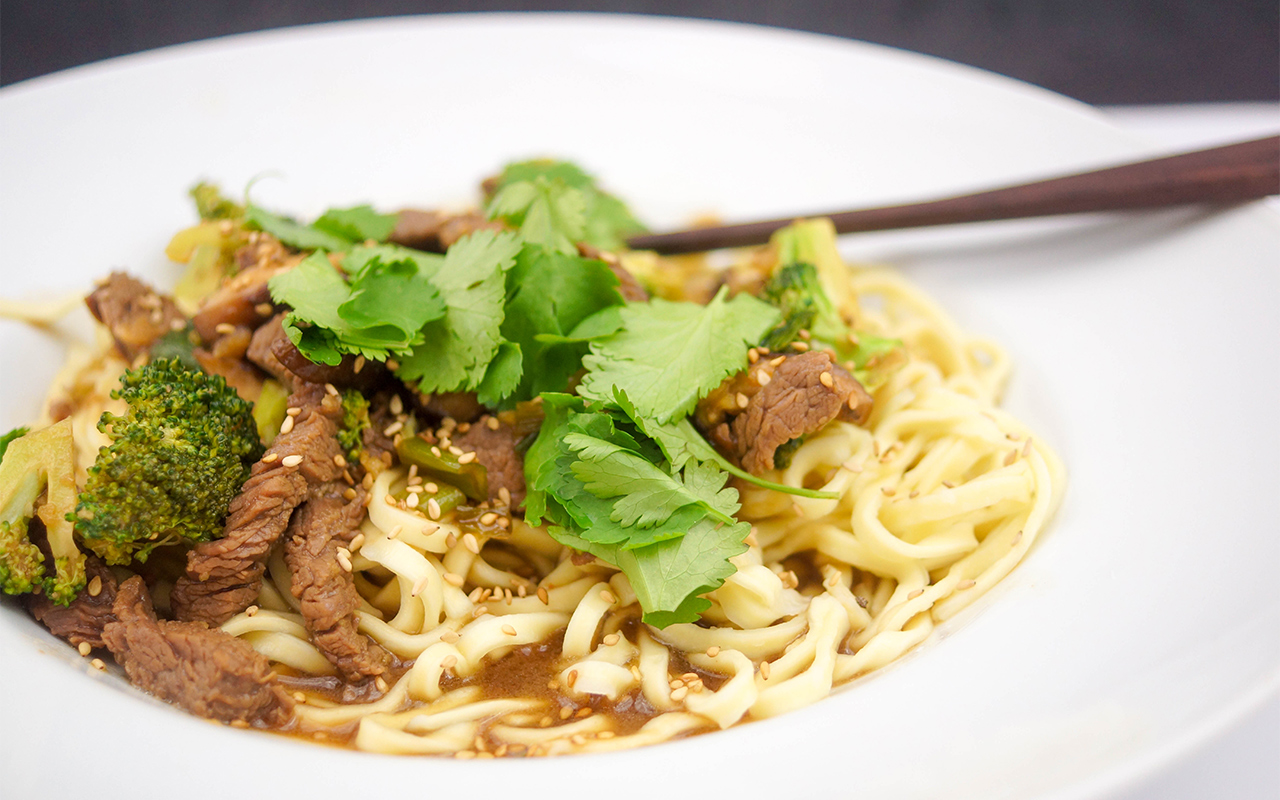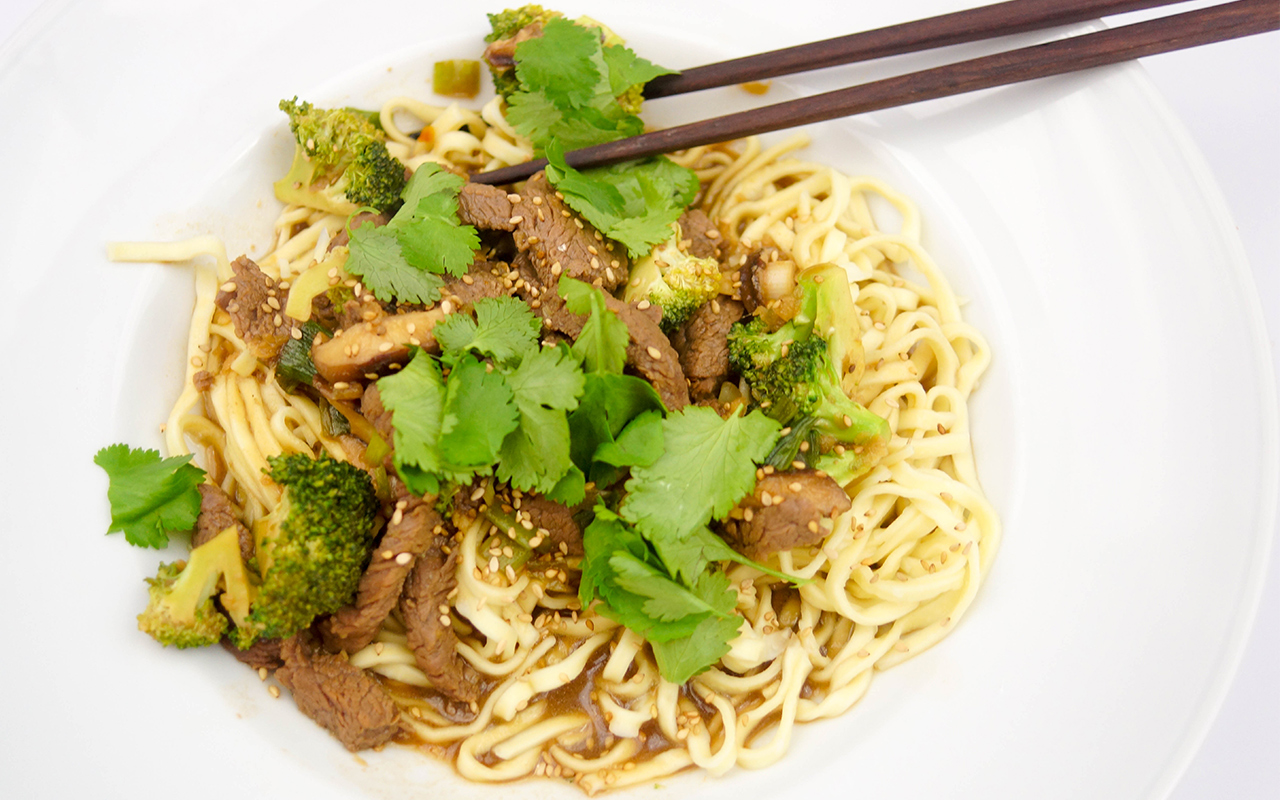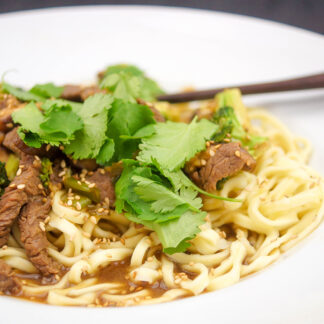
Craving something spicy and slightly sweet? Despite what the name suggests, Mongolian beef doesn’t actually trace its roots back to Mongolian cuisine. Neither the cooking method or the ingredients have anything to do with the country of Mongolia. The name only implies that it’s “exotic”. I can only say that the picture doesn’t do this dish justice – this was spectacularly delicious – since we were only two, even better with the little leftovers that remained the next day.
What is Mongolian beef?
Mongolian beef is essentially the creation of early Chinese immigrants who aspired to win over the palates of American customers. Due to the nomadic way of life, Mongolian cuisine is based largely on animal products: meat and dairy products. Meat from whatever animal is available, boiled or frozen – they have extremely cold weather during winter, turning the country in a massive freezer for 6 months and cheese, butter, fermented milk, and yoghurt. Yes, vegetarians would struggle in this vast and largely barren land.
Spicy Mongolian beef: a popular choice in Chinese cuisine
Commonly served in Chinese restaurants all over the world, characteristically Mongolian beef is served in a deliciously savory and fragrant sauce made from hoisin sauce, soy sauce, ginger, garlic and chili flakes. As if beef tenderloin wasn’t tender enough, I still like to marinate it for a couple of hours and then stir-fry it together with shiitake mushrooms and broccoli and serve it over noodles or steamed rice.
The beauty of stir-frying is that it’s a quick and easy way to get a tasty meal on the table. The preparation and actual cooking time takes less than half an hour. The extra step to “velvety” beef is worth it. Tender as this cut may already be, who can resist buttery-tender and succulent strips of beer tenderloin. I always look for sustainably raised organic beef. Enjoy this absolutely delicious Mongolian beef and shiitake mushroom stir-fry!
Spicy Mongolian Beef and Shiitake Mushroom Stir-Fry
Ingredients
For the marinade:
- 500 g organic beef tenderloin, cut into thin strips (budget alternative: flank steak)
- 1/4 cup soya sauce (60 ml)
- 1 tablespoon hoisin sauce
- 1 tablespoon sesame oil
- 1 tablespoon soft brown sugar
- 1 tablespoon minced garlic
- 1 teaspoon red pepper flakes
For the stir fry:
- 2 tablespoon mirin (Japanese rice wine)
- 4 tablespoons hoisin sauce
- 2 teaspoons soy sauce
- 2 tablespoons peanut oil
- 4 garlic cloves, minced
- 1 tablespoon minced ginger
- 1/2 teaspoon red pepper flakes
- 12 shiitake mushrooms, stems removed, thinly sliced (100 g)
- 3 green onions, thinly sliced
- 1 large broccoli head, cut into flowerets, quartered if large, stems trimmed
- 1 tablespoon toasted sesame seeds, garnish
- fresh cilantro, garnish (optional)
- rice or noodles for serving
Method
-
In a bowl, whisk together the ingredients for the marinade. Toss together with beef, cover and refrigerate for at least 1 hour to overnight.
-
Be sure to prepare your choice of rice or noodles in advance so that they ready to eat as soon as the stir-fry is cooked.
-
In a small bowl, combine the rice wine, hoisin sauce and soy sauce and set aside.
-
Heat a flat-bottomed wok over high heat. Once hot, swirl in the peanut oil by adding it to the sides of the pan and swirl the pan, so it is well coated.
-
Add the garlic, ginger and red pepper flakes and stir-fry for 10 seconds, then add the mushrooms, green onion, marinated beef, broccoli, and hoisin sauce mixture. Stir-fry for 4-5 minutes, until the beef is cooked through.
-
Garnish with sesame seeds and cilantro. Serve with steamed rice or noodles. Enjoy!
 Did you try this recipe?
Did you try this recipe?
Then tag @ellerepublic on Instagram and hashtag it #ellerepublic
How did you like it?
Please let me know how this Spicy Mongolian Beef and Shiitake Mushroom Stir-Fry recipe turned out for you! I would love to hear how you liked it. Simply rate it with the stars above ⭐ or leave me a comment and rate it below.
Did you make any changes to this recipe?
If you have tips for other readers, let me know! It helps me and other readers so much. Sharing is Caring :-).






